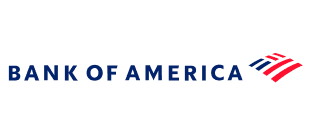 OriginUX launches Design-Ops for product orgs
See fitment for your teams
OriginUX launches Design-Ops for product orgs
See fitment for your teams
What we do
Empower businesses using user-centric approach to problem-solving
Tailored Design Thinking Strategy
We understand that each business is unique. Our DTaaS is customized to align with your specific goals, challenges, and industry requirements, ensuring that solutions are not just innovative but also relevant and actionable.
Cross-functional Collaboration
Our approach brings together diverse perspectives from across your organization. By fostering collaboration between departments, we ensure comprehensive solutions that address various facets of your business.
Continuous Support and Iteration
Design Thinking is an iterative process. Our team offers ongoing support, from ideation through implementation, ensuring that solutions evolve with your business and market demands.
Scalable Solutions
Whether you’re a startup looking to carve out a niche or an established enterprise aiming for transformation, our services are scalable to your business size and growth stage.
Our Design Thinking Process
Discover
Define
Develop
Deliver
Clients who trust us
OriginUX Studio is your go to Design Thinking Agency
Expert Guidance
Our team consists of seasoned design thinkers, strategists, and innovators who bring a wealth of experience and a proven track record of success in various industries.
User-Centric Approach
At the heart of our service is a deep commitment to understanding and empathizing with end-users, ensuring that solutions not only meet but exceed their needs and expectations.
Outcome-Focused
We measure our success by the tangible outcomes achieved through our collaborations. Our focus is on delivering solutions that drive growth, enhance customer satisfaction, and increase operational efficiency.
Innovative Mindset
We believe in challenging the status quo. Our service encourages a culture of innovation within your team, equipping you with the tools and mindset to continuously innovate.
Elevate Your Business with Design Thinking as a Service
We'll guide your team with a user-centric approach to navigate today's business landscape.
OriginUX Studio's Design Thinking Workshops
Unlock your team's creative potential with OriginUX Studio's Design Thinking Workshops. Our expertly crafted sessions are designed to foster innovation, solve complex problems, and drive transformative results. Whether you're a startup aiming for disruption or an established company seeking to innovate within your industry, our workshops provide the tools, techniques, and mindset necessary to bring groundbreaking ideas to life.
What We Offer

Immersive Learning Experience
Engage in hands-on activities that guide you through the Design Thinking process from empathy to prototyping and testing. Our workshops are not just about learning; they're about doing.

Expert Facilitation
Our workshops are led by seasoned design thinkers with extensive experience in facilitating innovation across various industries. They'll share insights, techniques, and real-world applications of Design Thinking principles.

Collaborative Environment
Collaborate with peers from diverse backgrounds and disciplines, leveraging collective knowledge to tackle challenges and explore new opportunities.

Customized Content
We tailor our workshops to your organization's unique challenges and objectives. Whether you're looking to improve customer experience, develop new products, or streamline services, our workshops are adapted to meet your needs.
Workshop Deliverables
Empathy Maps
Visual representations that capture insights about the target users' behaviors, thoughts, feelings, and needs. Empathy maps help teams understand and empathize with the users they are designing for.
User Personas
Detailed profiles of the archetypal users, including their backgrounds, goals, and pain points. Personas help in focusing the design process on user-centric solutions.
Problem Statements
Clearly defined statements that summarize the core challenges faced by users. These statements are crafted based on user research and are pivotal in guiding the ideation process.
User Journey Maps
Diagrams that illustrate the steps users go through to accomplish a specific goal within the product or service. These maps highlight user pain points and opportunities for improving the user experience.
Ideation Outputs
A collection of ideas generated during brainstorming sessions. These can include sketches, notes, and concepts developed by participants as potential solutions to the defined problem statements.
Prototypes
Tangible representations of ideas, ranging from low-fidelity sketches to more refined digital mock-ups. Prototypes are used to explore and test design concepts quickly and cost-effectively.
User Feedback Reports
Summaries of the feedback gathered from testing the prototypes with real users. These reports highlight what worked well and what needs improvement, providing valuable insights for further refinement of the solution.
Action Plan
A detailed roadmap outlining the next steps, responsibilities, timelines, and resources required to develop and implement the proposed solutions. This plan helps in transitioning from the workshop phase to the actual project execution.
Workshop Summary
A comprehensive document or presentation that encapsulates the key findings, insights, decisions, and outcomes of the workshop. This deliverable is essential for sharing the workshop's results with stakeholders and for guiding future project phases.
Who Should Attend
Design Thinking is a versatile and user-centric approach to solving complex problems and driving innovation. At its core, Design Thinking focuses on understanding the needs of the end-users and leveraging creativity to propose innovative solutions. Various frameworks have been developed to guide teams through the Design Thinking process.
Here, we'll explore several types of Design Thinking frameworks that can be applied to solve business problems across different domains:
The Classic 5-Stage Model
Developed by the Hasso-Plattner Institute of Design at Stanford (d.school), this model guides teams through five phases: Empathize, Define, Ideate, Prototype, and Test. It's particularly effective for developing deep insights into user needs and rapidly iterating solutions. This framework is versatile and can be adapted to almost any kind of business problem, from product development to enhancing service delivery.
The Double Diamond
Developed by the Design Council, the Double Diamond framework consists of four phases: Discover, Define, Develop, and Deliver. It emphasizes divergent and convergent thinking stages, where teams first expand their understanding of a problem and then refine and implement solutions. This framework is useful for tackling problems that require a broad exploration of potential solutions before narrowing down to specific implementations.
IDEO’s Three Phases
IDEO, a global design company, simplifies the process into three phases: Inspiration, Ideation, and Implementation. This framework is especially beneficial for teams looking for a flexible approach that encourages starting with broad inspiration, moving through ideation cycles, and finally implementing scalable solutions. It’s particularly suited for innovation-driven projects and organizational change initiatives.
Google’s Design Sprint
A more recent addition, Google’s Design Sprint framework condenses the design thinking process into a five-day sprint. Each day is dedicated to a specific phase: Understand, Sketch, Decide, Prototype, and Test. This framework is designed for rapid problem-solving and is particularly effective for validating ideas and solutions quickly before committing significant resources.
The Lean UX
Rooted in Lean and Agile development theories, Lean UX focuses on the continuous improvement of products and services by integrating design thinking with user feedback loops. It emphasizes a shift from heavy deliverables to a more lightweight, collaborative approach. Lean UX is particularly effective for teams working in fast-paced environments where user needs and business requirements are constantly evolving.
Service Design Thinking
Service Design Thinking extends traditional design thinking principles to the design and improvement of services. It involves understanding the user journey, service touchpoints, and the back-end operations that enable the service. This framework is particularly useful for organizations looking to enhance customer service experiences or streamline service delivery processes.
By choosing the appropriate Design Thinking framework, organizations can tackle specific business challenges with a structured, user-centric approach that fosters innovation and delivers tangible results.
Design Thinking for every function of your business

Design Thinking is a versatile and powerful methodology that can drive innovation and solve complex challenges across various organizational functions.
Below are use cases illustrating how Design Thinking can be applied to different departments such as Sales, Marketing, Human Resources (HR), Product Development, and Customer Service.

Sales
Customer Journey Mapping
Utilize Design Thinking to map out the entire customer journey, from awareness to purchase. This can help identify pain points and opportunities to enhance the sales process, making it more aligned with customer needs and expectations.
Value Proposition Refinement
Workshops focused on understanding the customer's perspective can lead to a refined value proposition that resonates more deeply with target audiences, thereby increasing conversion rates.

Marketing
Campaign Design
Implement Design Thinking to develop marketing campaigns that are deeply empathetic to the target audience's desires and challenges. This approach ensures campaigns are more engaging, relevant, and effective.
Content Strategy Development
Use customer insights and ideation sessions to create a content strategy that speaks directly to customer needs, increasing engagement and brand loyalty.

Human Resources (HR)
Employee Experience Enhancement
Apply Design Thinking to reimagine the employee journey from recruitment to retirement. By empathizing with employees, HR can create more meaningful engagement strategies, improve retention, and foster a positive workplace culture.
Training Program Development
Design Thinking can help in developing training programs that are tailored to the actual needs and learning styles of employees, making these programs more effective and enjoyable.

Product Development
User-Centric Product Design
Use Design Thinking to involve users early in the product development process. Feedback loops and prototyping can lead to products that better meet user needs and have a higher chance of success in the market.
Feature Innovation
Ideation workshops can uncover innovative features and improvements for existing products, driven by real user insights and creative problem-solving techniques.

Customer Service
Service Touchpoint Optimization
Design Thinking can identify and improve key touchpoints in the customer service journey, enhancing satisfaction and loyalty.
Problem Resolution Strategies
By understanding customer frustrations and needs, teams can develop more effective, empathetic strategies for problem resolution, turning negative experiences into positive ones.

Operations
Process Redesign
Apply Design Thinking to streamline operations, making processes more efficient and user-friendly for both employees and customers.
Innovation Culture
Foster a culture of innovation within operations by encouraging a mindset of continuous improvement and openness to change, inspired by Design Thinking principles.




















































